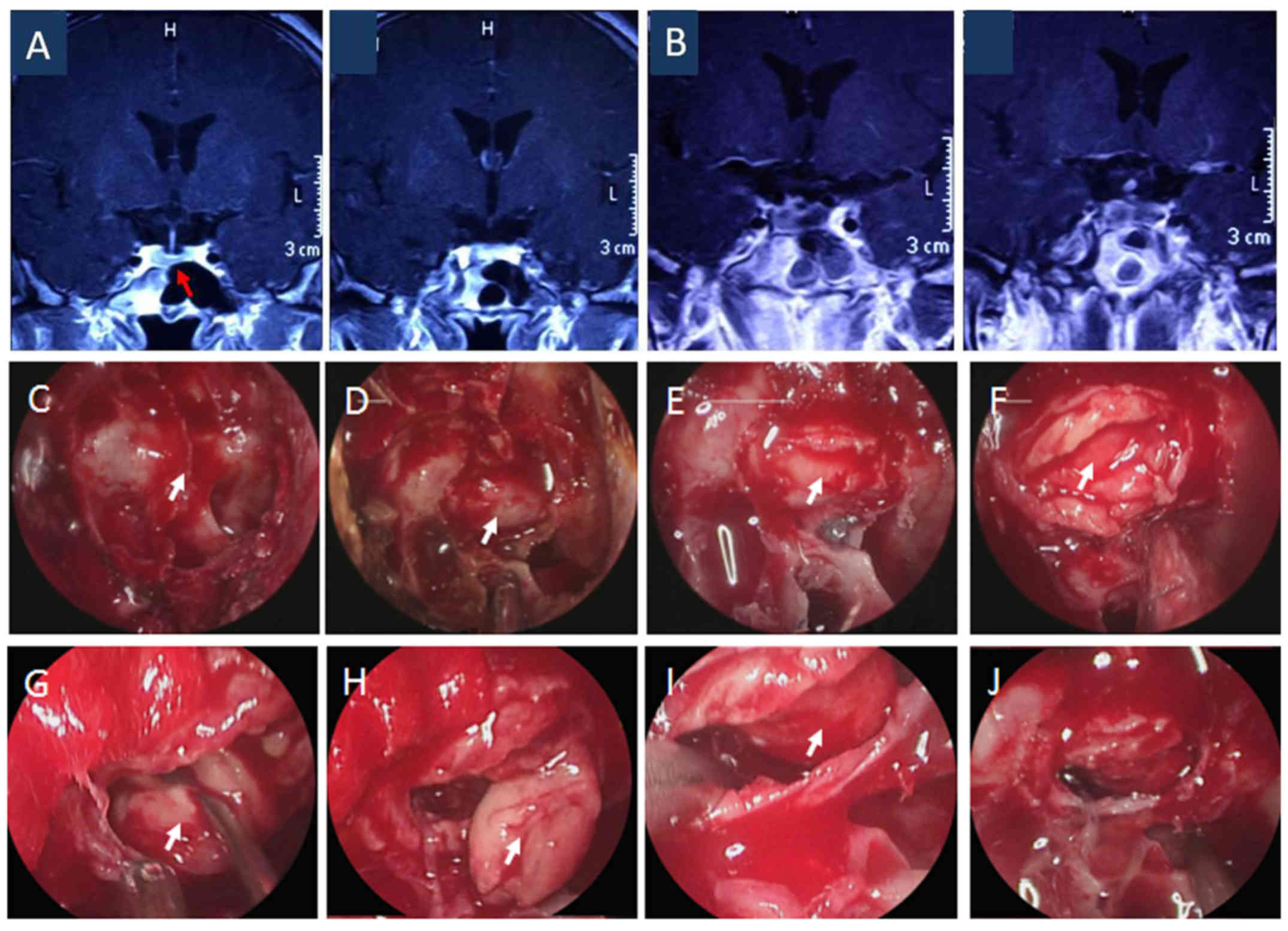Endoscopic surgical treatment of Cushing's disease: A single‑center experience of cauterization of peritumoral tissues
- Authors:
- Published online on: October 3, 2019 https://doi.org/10.3892/etm.2019.8075
- Pages: 4420-4426
-
Copyright: © Chen et al. This is an open access article distributed under the terms of Creative Commons Attribution License.
Metrics: Total
Views: 0 (Spandidos Publications: | PMC Statistics: )
Total PDF Downloads: 0 (Spandidos Publications: | PMC Statistics: )
Abstract
Endoscopic transsphenoidal surgery is a form of treatment for Cushing's disease that is initially preferred compared with other types of treatment. Peritumoral tissue is inactivated by cauterization if a clear border of the lesion cannot be identified. In order to compare the surgical outcomes and post‑operative complications between patients who underwent inactivation (cauterization of peritumoral tissues is referred to as inactivation) and those who did not, the medical records of patients treated between January 2010 and June 2016 were retrospectively reviewed. Furthermore, the results of conventional examinations performed in order to diagnose and locate the tumors, including neuroimaging, high‑dose dexamethasone suppression tests and/or bilateral inferior petrosal sinus sampling, were collected. A total of 79 consecutive patients with Cushing's disease were included in the present analysis. Inactivation of peritumoral tissue had been applied in 35 (44.3%) of the cases. A gross total resection was achieved in 73 (92.4%) of the cases, while partial resection had been performed in the remaining six (7.6%). Early post‑operative endocrinological remission was attained in 71 (89.8%) of the patients. A total of seven cases suffered from hypopituitarism, while cerebrospinal fluid rhinorrhea and brain stem infarction were recorded in four cases and one case, respectively. During the follow‑up, the duration of which ranged between 11 and 62 months, recurrence was documented in five patients, as determined by endocrinal examinations. All of the cases that were initially treated unsuccessfully and those with recurrence achieved endocrinological remission following radiotherapy. Enhanced pituitary magnetic resonance imaging revealed no further enlargement of tumors during follow‑up. The extent of endocrinological remission, recurrence and post‑operative complications did not significantly differ between patients who underwent inactivation and those who did not. In conclusion, inactivation of peritumoral tissue by cauterization achieved satisfactory results in patients with intricate lesions, however it is comparable to conventional procedures.












